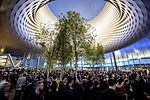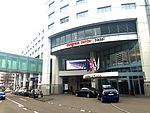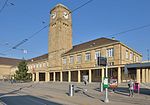Basel-Stadt

Basel-Stadt or Basel-City (German: Kanton Basel-Stadt; Romansh: Chantun Basilea-Citad; French: Canton de Bâle-Ville; Italian: Canton Basilea Città) is one of the 26 cantons forming the Swiss Confederation. It is composed of three municipalities with Basel as the capital. It is traditionally considered a "half-canton", the other half being Basel-Landschaft, its rural counterpart. Basel-Stadt is one of the northernmost and lowest cantons of Switzerland, and the smallest by area. The canton lies on both sides of the Rhine and is very densely populated. The largest municipality is Basel, followed by Riehen and Bettingen. The only canton sharing borders with Basel-Stadt is Basel-Landschaft to the south. To the north of Basel-Stadt are France and Germany, with the tripoint being in the middle of the Rhine. Together with Basel-Landschaft, Basel-Stadt was part of the canton of Basel, who joined the Old Swiss Confederacy in 1501. Political quarrels and armed conflict led to the partition of the canton in 1833. Basel-Stadt is Switzerland's seventh-largest economic centre and has the highest GDP per capita in the country, ahead of the cantons of Zug and Geneva (in 2018). In terms of value, over 94% of Basel City's goods exports are in the chemical and pharmaceutical sectors. With production facilities located in the neighbouring Schweizerhalle, Basel accounts for 20% of Swiss exports.
Excerpt from the Wikipedia article Basel-Stadt (License: CC BY-SA 3.0, Authors, Images).Basel-Stadt
Maulbeerstrasse, Basel Rosental
Geographical coordinates (GPS) Address Nearby Places Show on map
Geographical coordinates (GPS)
| Latitude | Longitude |
|---|---|
| N 47.566666666667 ° | E 7.6 ° |
Address
Maulbeerstrasse 16
4058 Basel, Rosental
Basel-City, Switzerland
Open on Google Maps









